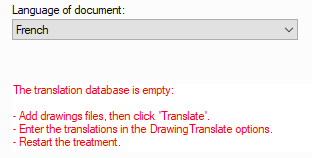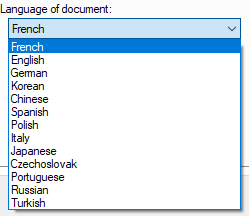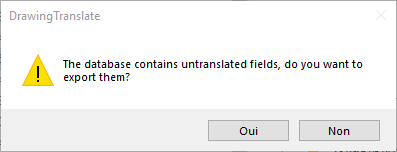Glossary creation

All translations made with DrawingTranslate are based on the glossary, so you need to create it before using the utility.
If no glossary is present (as is the case when DrawingTranslate is used for the first time), run the process once on one or more files and save the glossary with the translations.
If the translation database is empty, the following message will appear in the window.

Select the source language to be used :

Selection of languages for translation: all languages can be checked or unchecked:

Click on the "Apply".
If annotations have not been found in the translation file, this message appears, prompting you to export the annotations:

Save the CSV file. You can now view the processing report.
All annotations are inserted in the first corresponding column, and a column is also created for each selected translation language.

In our example, we now need to manually translate all the notes for the ''English'' and ''German'' columns.

 Save the table. This table is not the glossary, and must now be merged with the glossary.
Save the table. This table is not the glossary, and must now be merged with the glossary.
Glossary changes :
You can modify the glossary at any time, adding or deleting notes (see glossary file location in the ''treatment options). There are two ways of doing this:
- Manually: Manually add notes and translations to the glossary.
- Table creation: Create a new table (as seen above), and merge it with the glossary.
 New notes will be inserted in the glossary, excluding existing notes.
New notes will be inserted in the glossary, excluding existing notes.
